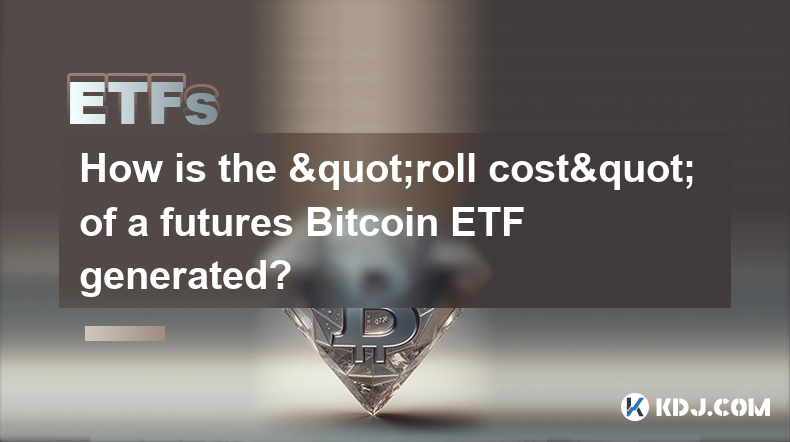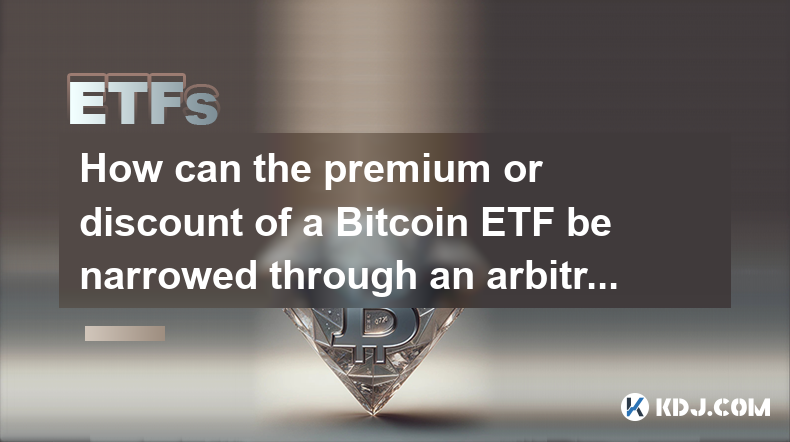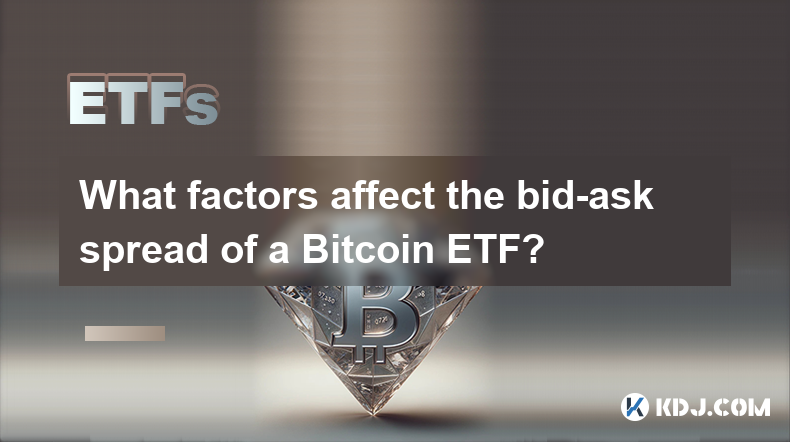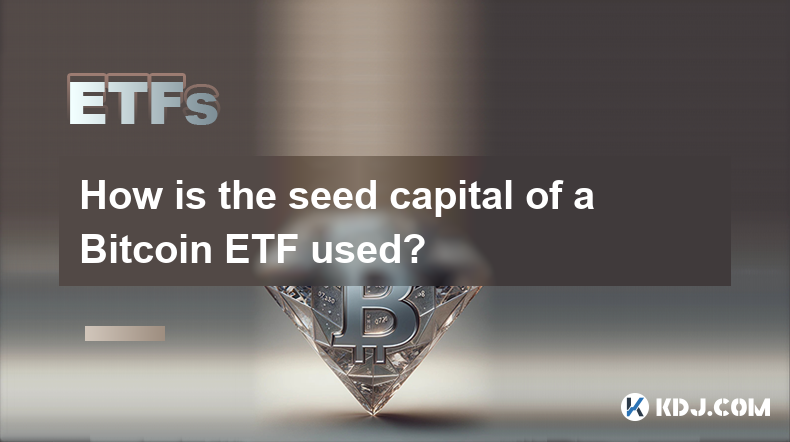-
 Bitcoin
Bitcoin $88,575.4133
1.33% -
 Ethereum
Ethereum $1,623.1195
-0.94% -
 Tether USDt
Tether USDt $1.0000
0.01% -
 XRP
XRP $2.1040
-0.96% -
 BNB
BNB $605.9509
0.36% -
 Solana
Solana $139.9862
-0.01% -
 USDC
USDC $1.0000
0.00% -
 Dogecoin
Dogecoin $0.1637
1.09% -
 TRON
TRON $0.2482
1.98% -
 Cardano
Cardano $0.6392
-1.18% -
 Chainlink
Chainlink $13.3059
-1.43% -
 UNUS SED LEO
UNUS SED LEO $9.0739
-4.00% -
 Avalanche
Avalanche $20.1274
-2.31% -
 Stellar
Stellar $0.2484
-4.08% -
 Sui
Sui $2.3116
2.05% -
 Shiba Inu
Shiba Inu $0.0...01252
-0.73% -
 Toncoin
Toncoin $2.9119
-3.20% -
 Hedera
Hedera $0.1725
0.04% -
 Bitcoin Cash
Bitcoin Cash $346.0750
1.19% -
 Hyperliquid
Hyperliquid $18.2428
0.88% -
 Litecoin
Litecoin $79.3117
-2.01% -
 Polkadot
Polkadot $3.7471
-4.36% -
 Dai
Dai $1.0000
0.00% -
 Bitget Token
Bitget Token $4.4341
-0.56% -
 Ethena USDe
Ethena USDe $0.9992
0.00% -
 Pi
Pi $0.6353
0.33% -
 Monero
Monero $216.8188
0.48% -
 Pepe
Pepe $0.0...08105
3.48% -
 Uniswap
Uniswap $5.3764
-1.05% -
 OKB
OKB $51.0901
0.18%
Are Bitcoin ETFs suitable for long-term investment?
Bitcoin ETF long-term suitability hinges on regulatory clarity, inherent market volatility, and understanding expense ratios. Diversification within a broader investment strategy is crucial to mitigate risk.
Feb 27, 2025 at 05:18 pm

Are Bitcoin ETFs Suitable for Long-Term Investment?
Key Points:
- Regulatory Uncertainty: The approval and regulation of Bitcoin ETFs remain a significant factor impacting their long-term suitability. Fluctuations in regulatory landscape can drastically affect ETF price and investor confidence.
- Market Volatility: Bitcoin's inherent volatility translates directly to ETF price fluctuations. This makes long-term investment decisions complex, requiring careful consideration of risk tolerance.
- Expense Ratios and Fees: Understanding the various fees associated with Bitcoin ETFs (management fees, trading fees, etc.) is crucial for assessing their long-term profitability. Higher fees can significantly erode returns over time.
- Underlying Asset Exposure: Bitcoin ETFs offer indirect exposure to Bitcoin. Understanding the specific mechanics of the ETF (e.g., physically-backed vs. futures-based) is vital for evaluating risk and return potential.
- Diversification and Portfolio Allocation: Bitcoin ETFs should be considered within a broader investment strategy, not as a sole investment. Proper diversification is essential for mitigating risk.
Detailed Exploration of the Suitability of Bitcoin ETFs for Long-Term Investment:
- Regulatory Uncertainty and its Impact on Long-Term Investment Decisions:
The regulatory landscape surrounding Bitcoin and cryptocurrencies in general is constantly evolving. The approval process for Bitcoin ETFs varies significantly across different jurisdictions. In some regions, regulators may be hesitant to approve Bitcoin ETFs due to concerns about market manipulation, price volatility, and investor protection. This regulatory uncertainty creates significant risk for long-term investors. A sudden shift in regulatory stance, such as a ban or stricter regulations, could negatively impact the value of Bitcoin ETFs, potentially leading to substantial losses. Furthermore, the lack of clear and consistent regulatory frameworks across different countries makes it challenging for investors to predict the long-term viability and stability of Bitcoin ETFs. This uncertainty necessitates a thorough understanding of the regulatory environment in the investor's jurisdiction and a careful assessment of the potential impact of future regulatory changes on the investment's value. Investors should monitor regulatory developments closely and be prepared to adjust their investment strategy accordingly. The lack of regulatory clarity introduces a level of risk that might be unacceptable for some long-term investors, especially those with a lower risk tolerance. Therefore, the potential for regulatory changes must be factored into any long-term investment strategy involving Bitcoin ETFs. Furthermore, the potential for varying regulatory frameworks across different jurisdictions introduces additional complexity for investors who might hold diversified portfolios including Bitcoin ETFs from multiple issuers. This cross-border regulatory aspect further complicates the long-term outlook and necessitates a detailed understanding of the legal frameworks in each jurisdiction involved. This requires diligent research and potentially professional financial advice to navigate the intricacies of international regulatory environments.
- Market Volatility and its Implications for Long-Term Returns:
Bitcoin's price is notoriously volatile, experiencing significant price swings in relatively short periods. This inherent volatility directly translates to price fluctuations in Bitcoin ETFs. While short-term traders might exploit these fluctuations for profit, long-term investors need to consider the impact of this volatility on their overall investment strategy. Significant price drops can lead to substantial losses, potentially offsetting any gains made during periods of price appreciation. For long-term investors, the ability to withstand periods of significant price decline is crucial. This requires a high risk tolerance and a well-defined investment timeline that accounts for the possibility of prolonged periods of underperformance. Investors should carefully evaluate their risk tolerance and ensure that their investment in Bitcoin ETFs aligns with their overall risk profile. Diversification across other asset classes is crucial to mitigate the impact of Bitcoin's volatility on the overall portfolio. Simply put, a diversified portfolio can help cushion the blow of sharp price drops in Bitcoin, preventing significant overall portfolio losses. Moreover, long-term investors should consider the potential impact of macroeconomic factors on Bitcoin's price. Events such as global economic downturns, changes in monetary policy, and geopolitical instability can all influence Bitcoin's price and, consequently, the value of Bitcoin ETFs. Therefore, a thorough understanding of macroeconomic trends and their potential impact on Bitcoin's price is essential for making informed long-term investment decisions. A robust understanding of market dynamics, combined with a long-term perspective, is necessary to navigate the volatility associated with Bitcoin and Bitcoin ETFs.
- Expense Ratios, Fees, and Their Cumulative Effect on Long-Term Profitability:
Bitcoin ETFs, like other investment vehicles, incur various fees. These include management fees, which are charged annually as a percentage of the ETF's assets under management. Other fees might include brokerage commissions when buying or selling the ETF shares and potential expense ratios associated with the underlying Bitcoin holdings. These fees can significantly impact the overall profitability of a long-term investment. Over time, even seemingly small fees can accumulate, reducing the overall return on investment. Therefore, it's crucial for long-term investors to carefully compare the expense ratios and fees of different Bitcoin ETFs before making an investment decision. A higher expense ratio can drastically reduce the long-term returns compared to an ETF with a lower expense ratio. The cumulative effect of these fees over many years can be substantial, potentially outweighing any gains from price appreciation. Investors should prioritize ETFs with lower expense ratios to maximize their long-term returns. Furthermore, investors should be aware of any hidden fees or additional charges associated with the ETF. The total cost of ownership should be thoroughly examined before making a long-term investment decision. A detailed analysis of all fees, including management fees, brokerage commissions, and any other applicable charges, is essential for a realistic assessment of long-term profitability. This analysis should be done in conjunction with projections of Bitcoin's price appreciation to determine the overall net return after deducting all relevant fees.
- Understanding the Mechanics of Different Bitcoin ETF Structures and their Risk Profiles:
Bitcoin ETFs can have different underlying structures. Some ETFs might hold physical Bitcoin, while others might use Bitcoin futures contracts to track the price of Bitcoin. These different structures carry varying levels of risk and potential returns. Physically-backed ETFs offer a more direct exposure to Bitcoin's price, while futures-based ETFs introduce additional complexities and potential risks related to the futures market. Understanding the specific structure of the ETF is crucial for assessing its risk profile and suitability for long-term investment. Physically-backed ETFs might be seen as less risky as they directly hold the underlying asset, but they may also have higher storage and security costs. Futures-based ETFs, on the other hand, might offer lower costs but introduce the risk associated with rolling over futures contracts and potential price discrepancies between the ETF and the spot price of Bitcoin. The choice between these different structures should depend on the investor's risk tolerance and investment goals. A thorough understanding of the mechanics of each type of ETF is crucial for making an informed decision. This includes understanding the potential risks associated with each structure, such as counterparty risk in futures-based ETFs or the risk of theft or loss in physically-backed ETFs. Careful consideration of these risks and their potential impact on long-term returns is necessary before committing to a long-term investment.
- Diversification and Portfolio Allocation: Integrating Bitcoin ETFs into a Broader Investment Strategy:
Bitcoin ETFs should not be considered as a standalone investment but rather as part of a well-diversified portfolio. Investing solely in Bitcoin ETFs exposes the investor to significant risk, especially considering Bitcoin's volatility. A diversified portfolio that includes various asset classes, such as stocks, bonds, and real estate, can help mitigate the risk associated with Bitcoin's price fluctuations. The allocation of assets to Bitcoin ETFs should depend on the investor's risk tolerance and investment goals. A conservative investor might allocate a small percentage of their portfolio to Bitcoin ETFs, while a more aggressive investor might allocate a larger percentage. However, even for aggressive investors, complete portfolio allocation to Bitcoin ETFs is generally not recommended due to the inherent volatility of the cryptocurrency market. Proper portfolio diversification is crucial for managing risk and ensuring the long-term stability of the investment portfolio. It is advisable to consult with a financial advisor to determine the appropriate allocation of assets to Bitcoin ETFs based on individual circumstances, risk tolerance, and financial goals. The advisor can help create a diversified portfolio that aligns with the investor's overall investment strategy and risk profile, minimizing the impact of Bitcoin's price volatility on the overall portfolio performance. This holistic approach to investment planning ensures that the long-term investment strategy remains robust and adaptable to market changes.
FAQs:
Q: Are Bitcoin ETFs safer than directly investing in Bitcoin?
A: Bitcoin ETFs offer a degree of regulatory oversight and potentially easier trading compared to directly holding Bitcoin. However, they are still subject to market volatility and the risks associated with the underlying asset. The relative "safety" depends on the specific ETF structure and the investor's risk tolerance.
Q: What are the tax implications of investing in Bitcoin ETFs?
A: Tax implications vary depending on the jurisdiction and the specific ETF. Capital gains taxes are generally applicable on profits from selling Bitcoin ETFs, and these can vary significantly. Consult a tax professional for specific guidance.
Q: How do I choose the right Bitcoin ETF for long-term investment?
A: Consider factors like expense ratios, underlying asset exposure (physically-backed vs. futures-based), regulatory approval, and the ETF provider's reputation. Compare multiple ETFs before making a decision.
Q: Can Bitcoin ETFs lose all their value?
A: While unlikely, a complete collapse of the Bitcoin market could lead to significant losses in Bitcoin ETFs. The inherent volatility of Bitcoin necessitates a thorough understanding of the associated risks.
Q: Are Bitcoin ETFs suitable for all investors?
A: No. Bitcoin ETFs are inherently risky investments due to Bitcoin's volatility. They are best suited for investors with a high risk tolerance and a long-term investment horizon who understand the associated risks. Investors with a lower risk tolerance should consider alternative investment options.
Disclaimer:info@kdj.com
The information provided is not trading advice. kdj.com does not assume any responsibility for any investments made based on the information provided in this article. Cryptocurrencies are highly volatile and it is highly recommended that you invest with caution after thorough research!
If you believe that the content used on this website infringes your copyright, please contact us immediately (info@kdj.com) and we will delete it promptly.
- AVAX Price Prediction 2025: Will Avalanche Reach New Heights?
- 2025-04-22 17:50:12
- XRP Price Prediction Shows Bullish Momentum After Coinbase Lists Its Futures Contracts
- 2025-04-22 17:50:12
- Bitcoin is surging again, capturing the spotlight in the crypto world.
- 2025-04-22 17:45:12
- Pi Network (PI) Holds Above $0.63: $5 Price Prediction and Whale Accumulation Fuel Optimism
- 2025-04-22 17:45:12
- One of the cryptocurrencies that ranked in the eleventh place, Chainlink, has been in the spotlight as it is traded at $13.12
- 2025-04-22 17:40:12
- Pi Network's Token Structure Promises a Fair Launch
- 2025-04-22 17:40:12
Related knowledge

What is the difference in returns between long-term holding of a Bitcoin ETF and holding Bitcoin directly?
Apr 09,2025 at 04:15am
When considering the difference in returns between long-term holding of a Bitcoin ETF and holding Bitcoin directly, it's essential to understand the nuances and factors that affect each investment option. Both approaches have their unique advantages and potential drawbacks, which can significantly impact the overall returns over time. Understanding Bitc...

How is the "roll cost" of a futures Bitcoin ETF generated?
Apr 08,2025 at 01:22pm
The 'roll cost' of a futures Bitcoin ETF is a critical concept for investors to understand, as it directly impacts the performance of the ETF. In this article, we will delve into the mechanics of how the roll cost is generated, exploring the underlying processes and factors that contribute to this cost. Understanding Futures ContractsFutures contracts a...

How can the premium or discount of a Bitcoin ETF be narrowed through an arbitrage mechanism?
Apr 09,2025 at 12:07am
Arbitrage mechanisms play a crucial role in narrowing the premium or discount of a Bitcoin Exchange Traded Fund (ETF). Understanding how these mechanisms work can provide valuable insights into the dynamics of Bitcoin ETFs and their relationship with the underlying asset. This article will delve into the specifics of how arbitrage can be used to align t...

What factors affect the bid-ask spread of a Bitcoin ETF?
Apr 08,2025 at 08:50pm
The bid-ask spread of a Bitcoin Exchange Traded Fund (ETF) is a critical metric that investors and traders closely monitor. It represents the difference between the highest price a buyer is willing to pay (bid) and the lowest price a seller is willing to accept (ask). Several factors influence this spread, and understanding them can help investors make ...

How is the seed capital of a Bitcoin ETF used?
Apr 10,2025 at 02:15pm
The seed capital of a Bitcoin ETF plays a crucial role in the establishment and operation of the fund. This initial investment is used to create the fund's underlying assets, manage operational costs, and ensure the ETF can start trading on an exchange. Understanding how this seed capital is utilized provides insight into the mechanics of Bitcoin ETFs a...

What is the difference between "physically backed" and "synthetic" Bitcoin ETFs in terms of holding assets?
Apr 10,2025 at 04:56pm
Bitcoin Exchange Traded Funds (ETFs) have become a popular way for investors to gain exposure to the cryptocurrency market without directly owning the underlying asset. There are two primary types of Bitcoin ETFs: physically backed and synthetic. Understanding the differences between these two types, particularly in terms of how they hold assets, is cru...

What is the difference in returns between long-term holding of a Bitcoin ETF and holding Bitcoin directly?
Apr 09,2025 at 04:15am
When considering the difference in returns between long-term holding of a Bitcoin ETF and holding Bitcoin directly, it's essential to understand the nuances and factors that affect each investment option. Both approaches have their unique advantages and potential drawbacks, which can significantly impact the overall returns over time. Understanding Bitc...

How is the "roll cost" of a futures Bitcoin ETF generated?
Apr 08,2025 at 01:22pm
The 'roll cost' of a futures Bitcoin ETF is a critical concept for investors to understand, as it directly impacts the performance of the ETF. In this article, we will delve into the mechanics of how the roll cost is generated, exploring the underlying processes and factors that contribute to this cost. Understanding Futures ContractsFutures contracts a...

How can the premium or discount of a Bitcoin ETF be narrowed through an arbitrage mechanism?
Apr 09,2025 at 12:07am
Arbitrage mechanisms play a crucial role in narrowing the premium or discount of a Bitcoin Exchange Traded Fund (ETF). Understanding how these mechanisms work can provide valuable insights into the dynamics of Bitcoin ETFs and their relationship with the underlying asset. This article will delve into the specifics of how arbitrage can be used to align t...

What factors affect the bid-ask spread of a Bitcoin ETF?
Apr 08,2025 at 08:50pm
The bid-ask spread of a Bitcoin Exchange Traded Fund (ETF) is a critical metric that investors and traders closely monitor. It represents the difference between the highest price a buyer is willing to pay (bid) and the lowest price a seller is willing to accept (ask). Several factors influence this spread, and understanding them can help investors make ...

How is the seed capital of a Bitcoin ETF used?
Apr 10,2025 at 02:15pm
The seed capital of a Bitcoin ETF plays a crucial role in the establishment and operation of the fund. This initial investment is used to create the fund's underlying assets, manage operational costs, and ensure the ETF can start trading on an exchange. Understanding how this seed capital is utilized provides insight into the mechanics of Bitcoin ETFs a...

What is the difference between "physically backed" and "synthetic" Bitcoin ETFs in terms of holding assets?
Apr 10,2025 at 04:56pm
Bitcoin Exchange Traded Funds (ETFs) have become a popular way for investors to gain exposure to the cryptocurrency market without directly owning the underlying asset. There are two primary types of Bitcoin ETFs: physically backed and synthetic. Understanding the differences between these two types, particularly in terms of how they hold assets, is cru...
See all articles























































































